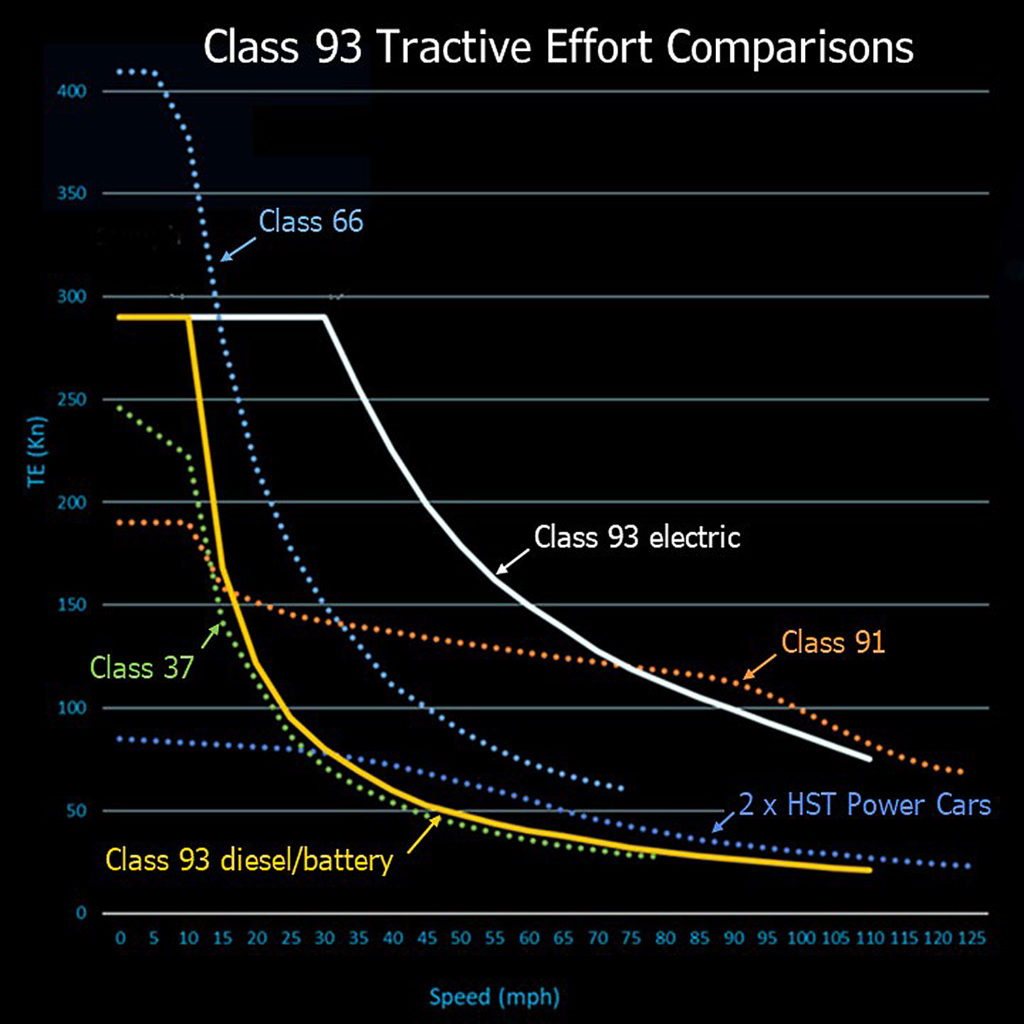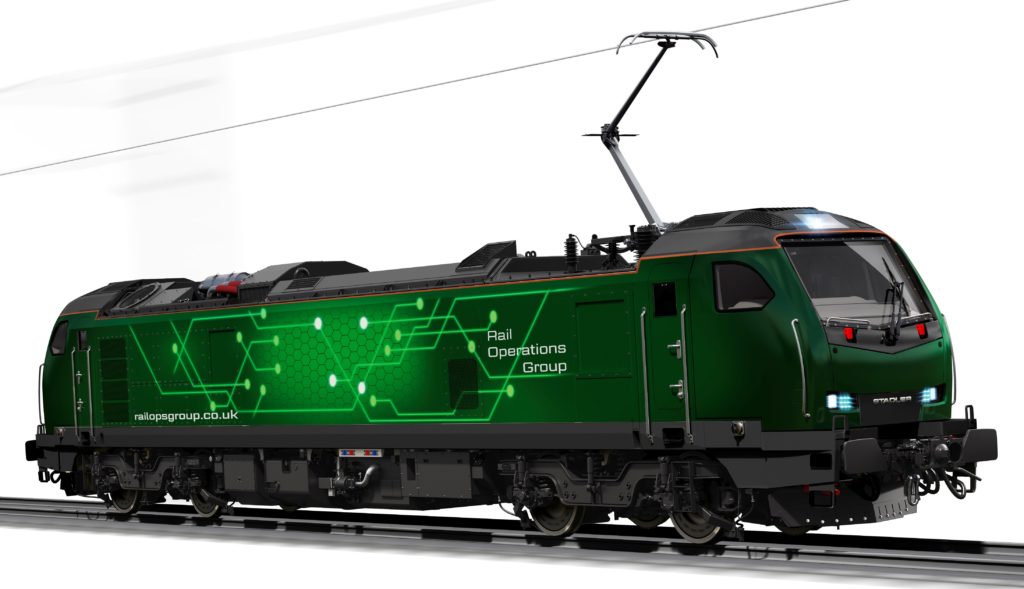Rail Operations (UK) has signed a framework agreement with Stadler for the supply of 30 Class 93 tri-mode locomotives, of which an initial batch of ten locomotives will be due for delivery in early 2023. While the Class 93 concept was first proposed in 2018, it was not possible to secure funding for this order until Rail Operations was acquired by STAR Capital Partnership in January.
The Class 93 is a Bo-Bo locomotive based on Stadler’s Class 68 and Class 88 locomotives that have been operating successfully in the UK for some years. It was described in detail in the Rail Engineer article Re-engineering Rail Freight (see Issue 185, July/August 2020) and has a maximum speed of 110mph.
Stadler’s first tri-mode locomotive has three different power sources. In electric mode, it can run on 25kV AC overhead lines with a power of 4,000 kW. Its Caterpillar C32 engine has a nominal power of 900kW, which can be boosted by 400 kW for short periods (whilst accelerating or going up gradients) by the Lithium Titanate Oxide (LTO) battery pack when operating on non-electrified lines. Shunting operations can be powered by the batteries alone.

The capabilities of the Class 93 are shown by a comparison of its tractive effort curves with other traction. These curves show how the pulling force of all forms of traction diminishes with speed as power is the product of force and velocity.
The Class 93 in diesel/battery mode can be seen to have an identical performance to that of a 1,305kW Class 37 locomotive. The Class 93 certainly does not have the pulling force of the 2,460kW heavy-haul Class 66 (light blue dotted line), which has a particularly high tractive effort at very slow speeds. However, with just a 900kW diesel engine, the Class 93 can manage 60% of a Class 66’s tractive effort at 75mph.
In electric mode, the Class 93 has twice the tractive effort of the Class 66 at 75mph, which illustrates the benefit of electric freight traction, particularly up the steeply-graded lines between Lancaster and Glasgow. An electric Class 93 has a comparable performance to a Class 91 electric locomotive above 75mph and a far better performance at lower speeds.
The comparison with HST Class 43 power cars shows that a diesel mode Class 93 offers comparable performance at 110mph whilst an electric mode Class 93 has twice the traction effort of HST power cars at this speed.
All this shows that the Class 93 is a true mixed-traffic locomotive.


